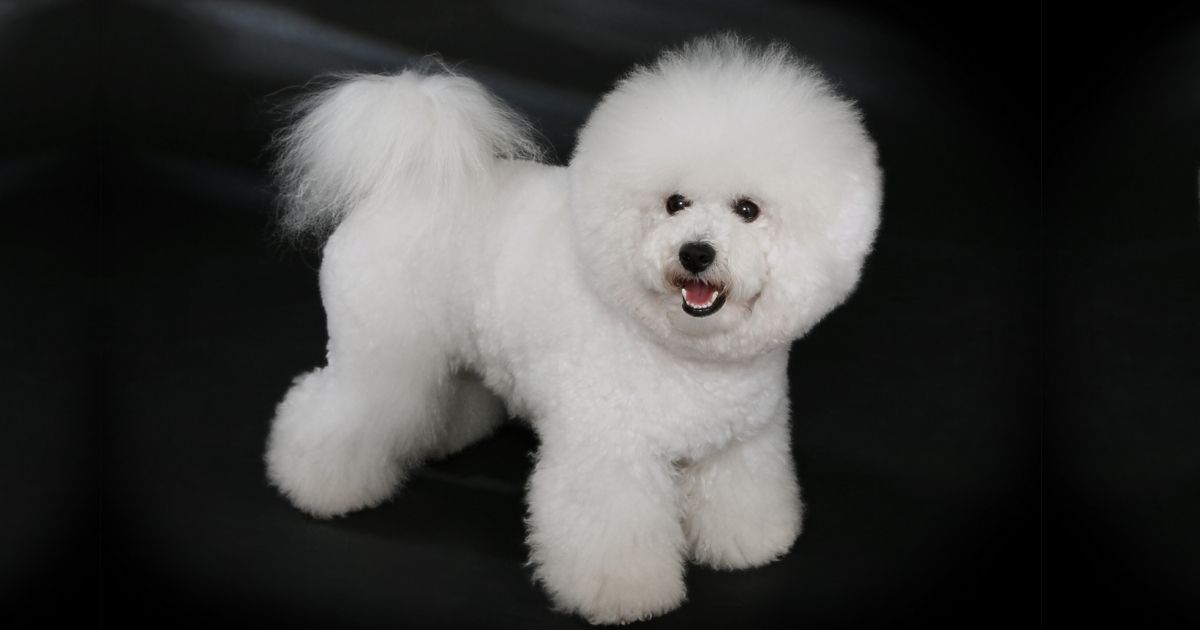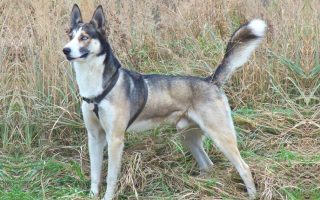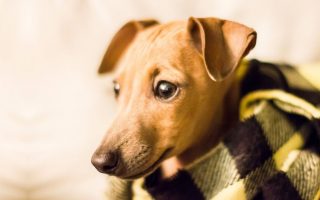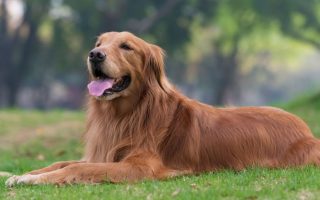All fur and no knickers! It seems the Bichon Frise dog breed inspired that expression.
How would you describe this beauty? A cheerful, energetic, small dog with a big heart? If you think that’s the correct answer after looking at any picture you find online, then you’re right!
The Bichon Frise is a perfect companion, often found entertaining his people at home. Little wonder it is regarded as one of the most affectionate dog breeds.
Their entertaining and fun-filled nature can be traced to their time out as circus dogs, but they’ve grown to become the seventh wonder amongst apartment dog lovers.
While the qualities highlighted above are adorable, you shouldn’t forget that they’re one of several dog breeds, having their challenges and imperfections.
They have a history, unique features, behavioral traits, and other important information you need to know.
This article on Bichon Frise dog breed information and facts is written as a timely reminder and an aid for first-time pet owners or experienced owners considering this furry as their next pet.
There are chances that you’re pretty familiar with some of these Bichon Frise facts.
Bichon Frise Dog Breed Information

| Dog Breed Group | Sporting Group |
| Height | 9.5 to 11.5 inches |
| Weight | 12 to 18 pounds |
| Coat | Medium length, silky texture, double coat, curly |
| Color(s) | White, White & Buff, White & Cream, White & Apricot |
| Life Expectancy | 14 to 15 years |
| Temperament | Playful, sensitive, cheerful, gentle, affectionate |
| Origin | Canary Islands (Spain); Belgium, France (later development) |
| Bred For | Companionship |
| Nickname(s) /Other Name(s) | Tenerife Dog, Purebred Bichon, Bichon Tenerife, Bichon A Poil Frise |
| Recognized by the AKC | Yes |
| Recognized by the UKC | Yes |
Bichon Frise Dog Breed Characteristics
| Characteristics | Rating |
|---|---|
| Adaptability | 5/5 |
| Apartment Friendly | 5/5 |
| Child Friendly | 3/5 |
| Pet Friendly | 5/5 |
| Dog Friendly | 5/5 |
| General Health | 3/5 |
| Grooming Needs | 5/5 |
| Trainability | 3/5 |
| Intelligence | 3/5 |
| Playfulness | 3/5 |
| Exercise Needs | 2/5 |
| Social Needs | 5/5 |
| Tendency to Bark | 3/5 |
| Shedding Level | 1/5 |
| Territorial | 3/5 |
| Watchdog Ability | 3/5 |
Little-Known Facts About Bichon Frise Dog Breed
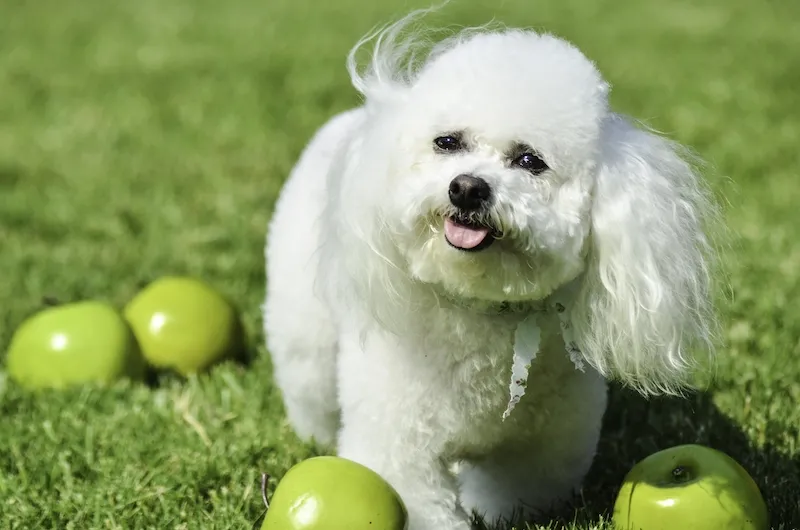
Fact #1: The Bichon Frise is One of the Most Hypoallergenic Dogs
If you’re allergic to dog fur, don’t be scared to choose the Bichon Frise even though it’s furry. It’s a hypoallergenic breed, implying that it doesn’t shed hair.
Note that allergies to pets may differ, some are allergic to their spit, not fur, and hypoallergenic pets still lose a few hairs.
Interestingly, the Bichon Frise is a breed that sheds very little and has less presence of saliva because of the level of grooming it requires.
Fact #2: The Bichon Frise Can Suffer from Allergies
It would be best to discard any idea regarding the Bichon Frise not suffering from allergies because they are hypoallergenic, as that could be misleading.
They’re less likely to cause an adverse reaction to humans but are prone to allergies themselves.
Dust, flea bites, chemicals, and pollen are some substances that the breed is allergic to.
Fact #3: They Have Been Featured in Works of Art
Usually, celebrities are those we find in artworks. It’ll be fair to say that our beloved Buchon Frise is a celebrated breed right from the 16th century.
Famous painters like Francisco de Goya, Tiziano “Titian” Vecellio, and Sir Joshua Reynolds have featured the Bichon Frise in their paintings.
We can readily recall the famous Titian’s portrait of Federico II Gonzaga, featuring a Bichon Frise embracing the Italian Duke.
Fact #4: The Bichon Frise Has Cousins
The long history of the Bichon Frise accounts for its family tree. The original breed of the Bichon Frise is also called the Bichon Tenerife, named after Tenerife on the Canary Islands.
There are three other variants from the same family as the Bichon Frise: the Maltese, Bolognaise, and Havanese.
The Bichon Frise differs from the rest because of its double coat.
Fact #5: They’re Always White
Italian philosopher and artist Leonardo Da Vinci once stated, “For those colors you wish to be beautiful, always prepare a white background.”
True to those words, the Bichon Frise is known for its beautiful, white, curly fur, sometimes found with tints of buff, cream, grey, or apricot.
These colors must have been among the reasons for their association with European noble in the 13th century.
Bichon Frise Dog Breed History & Origin
The history of Bichon Frises dates back to the 13th century. Before then, small white dogs found throughout the Mediterranean were used as trade items.
These white dogs soon became a popular pet in Tenerife, the largest island on the Canary, that they would be known as Bichon Tenerife — the direct ancestors of the Bichon Frise.
Their size and charming personality began to attract European nobles in the 13th century.
Some important figures associated with the Bichon Frise include Federico II Gonzaga and King Henry III of France.
The breed also featured in famous portraits, including Sir Joshua Reynolds’ portrait of Miss Beatrix Lister in 1765 and Titian’s portrait of Federico II Gonzaga.
The French Revolution that started in 1789 sadly ended the prestigious status of the Bichon Frises as their pet parents were executed or bolted behind bars.
They lost their place on the laps of the elites and had to fend for themselves on the streets.
Thankfully, commoners and street entertainers noticed the Bichon Frise’s intelligence and humor.
As such, they trained them to perform little tricks like walking on their hind legs, somersaulting, and waving their forepaws in the air in a human-like manner.
Their trainability, look, and cheerful disposition earned them an elite status as circus spotlights.
Over five centuries and counting, the Bichon Frises have become so popular in Europe, famed among nobles, featured in artworks, entertained crowds, and survived two world wars.
Yet, it was until 1956, before Bichon Frises could reach American soil, when French citizens Helene and Francois Picault arrived in the United States with six of them.
In 1973, the American Kennel Club (AKC) gave the Bichon Frises full recognition in the Non-Sporting Group.
Bichon Frise Temperament & Intelligence
True to its looks, the Bichon Frise is a gentle, cheerful, and friendly dog recognized by the AKC as one of the world’s great ‘personality dogs.’
They’re capable of winning even the hearts of non-dog lovers with their cotton-ball cloud of curly white hair and their waggery.
Their affectionate nature makes them good companions as they’re ready to have all the attention you give.
However, they could suffer from separation anxiety if they’re left alone for a long time. As such, they’re not the best choice for single people that leave their pets alone for long periods.
Being cute and cuddly doesn’t make the Bichon Frise a lazy breed. As such, he needs regular exercise for at least twenty to forty minutes a day.
The Bichon Frise is no good as guard dogs, but their alertness makes them reliable watchdogs.
How?
Watchdogs don’t need to be fierce or big, as many people believe, but should be vigilant and able to alert their owners when they notice anything unusual.
Watchdogs have traits like alertness and the ability to bark loudly.
With the proper training to distinguish between usual and unusual, the Bichon Frise will sound an alarm by barking when he notices intruders, visitors, or any strange occurrences.
The Bichon Frise has a reputation of being difficult to housetrain, but the success rate isn’t alarming. All you need is to be firm, gentle, and consistent.
Is a Bichon Frise a good family dog?
The Bichon Frise requires a lot of attention and love, but you can be sure he’ll do anything to please you.
His energetic spirit and clownish antics can be very entertaining, creating a cheerful atmosphere in the home.
He could be a little timid during the early stages but will fit into family socialization and training.
They’re gentle lapdogs with affectionate personalities. They also adapt quickly to their environment and have a vivacious temperament, making them suitable for aged people.
If you’re getting a pet for the first time, you might consider the Bichon Frise because of its sweet and docile nature and laid-back temperament.
Are Bichon Frises good with kids?
Generally, the Bichon Frise is a breed that kids will love to have around. They’re small, cuddly, sweet, and have a friendly temperament.
However, there have been cases where the Bichon Frise has shown their displeasure for kids’ excesses. The breed ranked highly for snapping at kids in one survey.
Depending on their training and circumstances, any dog is a potential danger to kids without an adult’s supervision.
It’s worth remembering that they’re animals and are guided by instincts; therefore, they could aggressively react if they feel endangered. Besides, accidents may occur.
We recommend supervising playtime with the Bichon Frise and your kids regardless of the dog’s friendly and cheerful personality.
It would be best if you don’t get a puppy when you have children below six years.
It would ensure your family’s safety as children below this age might not understand interacting with a pet.
Is the Bichon Frise good with other pets and dogs?
The Bichon Frise gets along well with other pets because of their friendly nature.
This is a good trait as interacting with other dogs offers an opportunity for healthy physical activities and mental stimulation.
Bichon Frises interact well with cats too, but that depends on the cat’s temperament and training and the dog’s social life.
Some cats might be irritated by the Bichon’s excitement and enthusiasm and will react aggressively.
Therefore, ensure that you supervise playtime with cats to caution your dog as required.
It would be best if you taught your dogs to interact with other pets from a young age.
Ensure regular visits to your vet as one of the downsides of pet-to-pet interaction is the risk of contracting diseases.
Male vs Female Bichon Frise Dog Breed
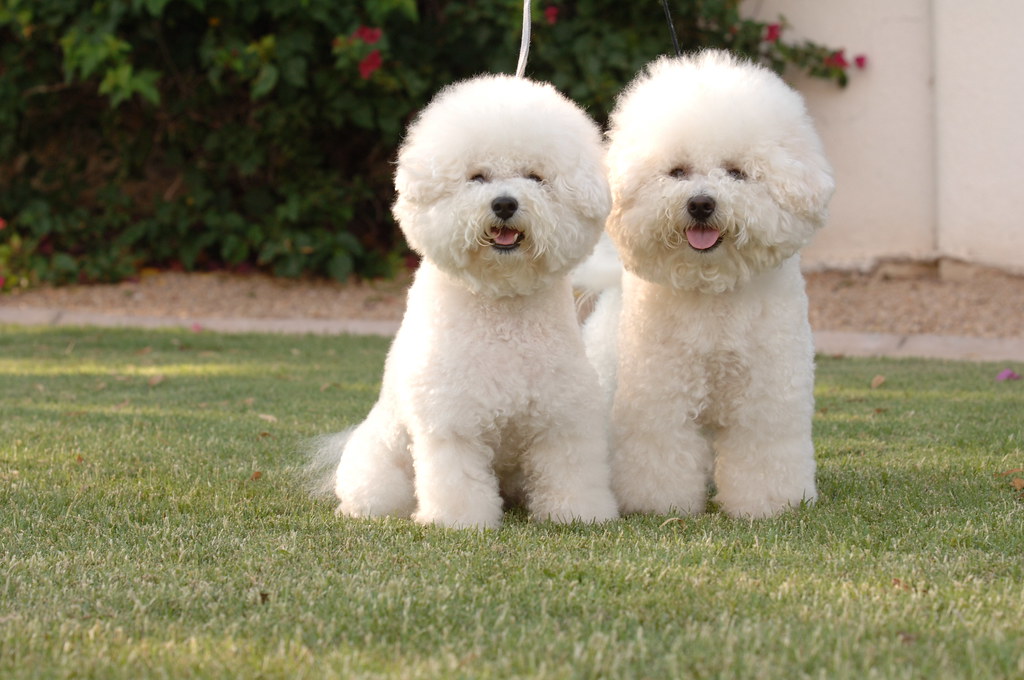
Gender is usually a game of preference, but there are certain factors to consider if you’ve not made up your mind yet.
Male and female Bichon Frises have the same physical features, including coat and size.
This dog breed is sexually monomorphic — a term used to describe breeds where the differences between genders are either non-existent or so subtle.
Most female Bichon Frises are more introverted, unlike their male counterparts, who are more cheerful and affectionate.
Don’t expect that a dog will be a complete replica of another dog because traits differ in animals like humans.
Also, intrinsic factors like lineage and heredity and extrinsic factors like socialization might affect your dog’s personality regardless of its gender.
If you’ve had pets, what gender have you felt most comfortable with? If you already have a Bichon Frise, is it a male or female? Are you planning to breed your Bichon Frise?
These conditions can influence your decision on gender.
There are specific ailments common to each gender. For instance, your female Bichon Frise is at risk of mammary cancer.
She might also experience mood swings and bleeding during her heat period.
Males Bichon Frises are prone to cryptorchidism — a condition where a dog experiences testicular failure, and his testes cannot descend into the scrotum.
Male Bichon Frises can become territorial and aggressive as well.
As stated earlier, the choice of gender depends on preference since both genders have their peculiar traits.
Caring for a Bichon Frise
Bichon Frise Food and Diet
Bichon Frises are healthy eaters; a handful of them are picky eaters too.
However, it would be best if you regularly feed your Bichon with highly nutritious foods at the right proportion. As you read further, do well consider our recommendations.
Your Bichon Frise requires a healthy and nutritious diet to look good and maintain its energy levels.
Diet and feeding methods differ with age; that’s why you need to know the nutrients your dog’s food must contain and how many times you should feed your dog.
A full-grown Bichon Frise weighs less than 20 pounds and grows less than 15 inches, implying that pups are even smaller.
As such, these growing little dogs are more delicate and should be fed accordingly.
Every diet should contain adequate amounts of calcium and protein to strengthen their bones and help them grow.
A strictly followed feeding schedule can be implemented; this will aid training and prevent underfeeding or overfeeding that can cause malnourishment or obesity.
Experts recommend that you feed your puppy Bichon Frise three times a day and go less once when it gets older.
A full-grown Bichon Frise should be fed twice daily; anything more could result in obesity.
Grains like barley and quinoa are healthy additions to provide your dog with carbohydrates and fiber.
Bichon Frise Exercise
One look at a Bichon, and you might feel it’s too frail to get plenty of exercise. Contrary to such an opinion, the Bichon Frise is a very energetic breed.
Even human companions would enjoy a walk in good weather as much as they enjoy hugs and cuddles. The same applies to the Bichon Frise, requiring exercise to remain agile and stay healthy.
They’re small dogs and do not need long hours of exercise; twenty to forty minutes of exercise daily is enough.
An excellent way to exercise your dog is walking. Why not slip on your dog’s harness and take it for a short stroll down the street?
Fetch is another good game to play with your dog. Throw their favorite ball to a reasonable distance and ask them to fetch.
You might be surprised how good this game gets their attention for a couple of minutes.
Not a bad one for a first-time trainer, but consistency and firmness are required.
The Bichon’s temperament makes it easy to train, but their enthusiastic excitement could make them challenging to housetrain.
The Bichon Frise isn’t a headstrong breed but always seeking to please its owners. However, their playful nature can get in your way while training, playing on furniture, and running around the house.
Crate training is recommended for this breed as it helps prevent them from chewing on items, sharpens their den instincts, and keeps them from harmful substances.
They have a welcoming instinct, which makes them generally friendly to strangers.
Still, it wouldn’t hurt if you socialize them so that they can accommodate your visitors, kids, and other pets.
Harsh scolding might not go down well with a Bichon Frise, so endeavor to make training sessions short and enjoyable.
Bichon Frise Grooming Needs
Honestly, the Bichon Frise is a costly breed to maintain. They have hypoallergenic hair, which requires professional grooming to keep them in shape.
You don’t need a soothsayer to tell you that the Bichon Frise is a costly breed to maintain the white, silky-textured double coat. Washing and styling are essential to bringing out this furry’s beauty.
Washing is required no longer than a three-week interval. It would be best to bathe your dog once each week, depending on how dirty the dog gets.
For instance, a dog that regularly engages in outdoor activities in mud and dust would require more frequent baths than one that rarely does.
Washing is crucial to skin and coat health, promoting growth and mitigating hair shaft and coat damage.
Grooming your dog goes further than washing its coat; it involves conditioning, oiling, shaving, and/or dressing the coat. You can groom your dog yourself at home or get a professional groomer to do it.
However, very few things about owning a pet bring as much joy as seeing a groomer’s artistic expertise on your Bichon Frise.
The powder puff look and black bottom eyes can’t just get enough of your stare.
If you wash and groom your dog at home, ensure that you use products that won’t react on your dog’s skin, hair shaft, or coat.
Be sure to apply the right amount of pressure when washing and applying other products.
Bichon Frise Health Conditions
Bichon Frises are generally healthy and can live as long as 14–16 years.
However, they are prone to certain conditions common to breeds of their size.
The following are common health issues to expect at any point in their life.
Hip Dysplasia
When your agile Bichon Frise begins to show reluctance to move and walks abnormally when he finally does, it could be symptoms of hip dysplasia.
Hip dysplasia is a genetic condition of loose hip joints. This condition can be treated by weight control and physical therapy.
Slipped Stifle
Also called patella luxation or slipped knee, this is a condition where knee caps fall out of their respective grooves, causing pain to the affected hind leg.
As such, your dog is forced to walk unusually, bearing weight and relying on the unaffected legs.
The dog might begin to lick its affected knee, feel restless, or refuse to move — these are common slipped stifle symptoms.
Juvenile cataracts
Juvenile cataract is a classification of cataract that affects a dog’s eye during puppyhood.
It can be difficult to notice at times as it affects just a tiny part of the eye lens before covering it all. Total opacity results in blindness.
Poor nutrition, an underlying health condition like diabetes mellitus, injury, and old age can cause cataracts.
While there is no specific treatment for this condition, vets can treat underlying health conditions or correct nutritional deficiencies that cause cataracts.
Depending on the cause, cataracts can be removed through surgery.
Frequently Asked Questions
How big is a full-grown Bichon Frise?
Bichon Frises are small-sized dogs, and a stranger or someone who isn’t familiar with dogs might mistake an adult Bichon Frise for a puppy.
Full-grown Bichon Frises can be about 9.5 inches to 11.5 inches tall and weigh less than twenty pounds.
Is a Bichon Frise right for you?
Except you’re looking for a guard dog, the Bichon Frise is an excellent breed to own.
His smooth looks can win you over in a bit, while his friendly, cheerful, and affectionate personality can be very bonding. They’re generally good with kids and strangers as well.
The most notable downsides about this breed are their grooming cost and excessive demand for attention, making it a wrong choice for people that don’t have much time to spend with their pets.
How Long Do Bichon Frises live?
Healthy Bichon Frise dog breeds can live between fourteen and fifteen years.
Do Bichon Frises shed?
Bichon Frises don’t shed their fur, making them an excellent choice for people allergic to animal fur.
How Much Does Bichon Frise Cost?
Prepare to offer between $700 and $2,000 to price a Bichon Frise pup away. Parental history and buying from a reputable breeder could make a dog cost even more.
Are Bichon Frises High Maintenance Dogs?
To keep your Bichon in shape, you’ll need to maintain a regular grooming schedule, which may include frequent visits to a salon for the best grooming services.
What Do Bichon Frise Prey On?
You can trust the Bichon Frises affectionate nature makes it have a low prey drive. They completely rely on humans for food and shelter.
To Wrap Up
The Bichon Frise is a beautiful friend and an excellent companion.
Raising one can be a wonderful experience for you too, as many current and past owners have exciting stories to tell about their dogs’ entertaining disposition.
The information provided in this Bichon Frise dog breed information and facts can prove to be a helpful resource if you’re getting a Bichon Frise for the first time or currently own one.
We hope that the Bichon Frise’s stirring history, fluffy facts, and affectionate personality have cemented your decision to get one if you’ve ever thought of it.

